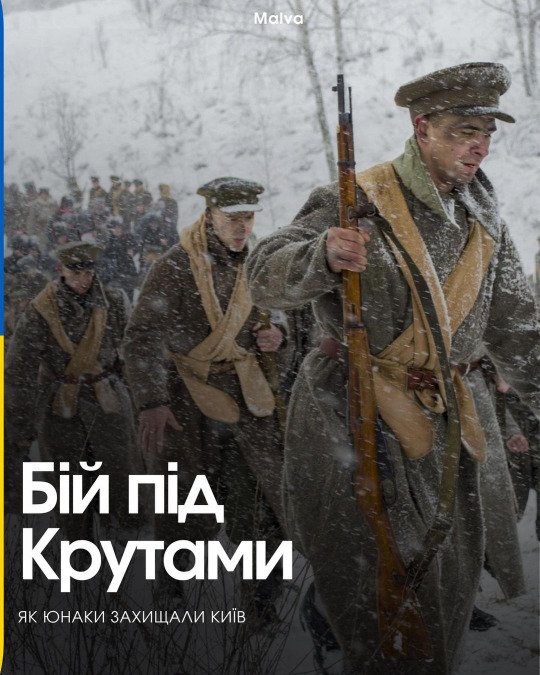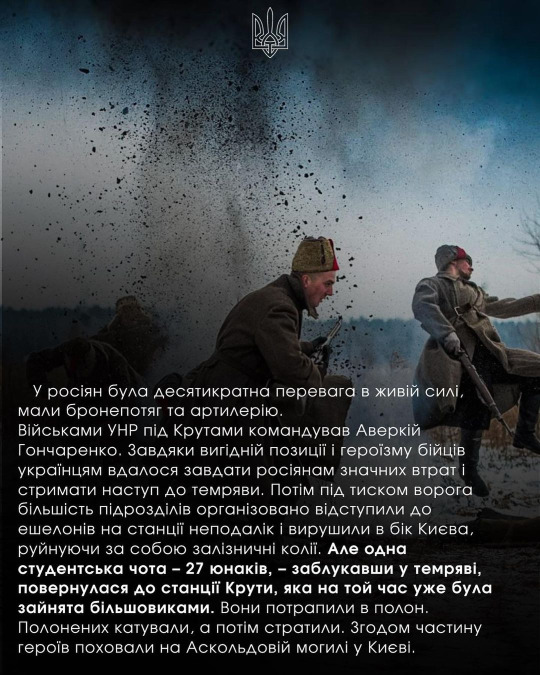#St. Methodius
Explore tagged Tumblr posts
Text
SAINT OF THE DAY (June 14)

St. Methodius worked for unity and reconciliation in the Eastern Church and served as the Patriarch of Constantinople the last five years of his life.
Born in Syracuse, he first felt the call to enter religious life while in Constantinople, where he had gone to seek a position at court.
He left for the island of Chinos, where he built a monastery and started a monastic community.
However, his time at the monastery was short-lived since he was summoned by the Patriarch of Constantinople to help govern the diocese and create unity after a debate broke out on the use of icons in worship.
While in Rome seeking the Pope’s help, he was exiled for seven years.
He returned as patriarch in 842 and continued to work for unity.
1 note
·
View note
Text
Because we're both too single to celebrate Valentine's Day fully, and because there are two other great saints that have their feast day on 14th February that everyone keeps forgetting about, my friend and i have our own tradition of celebrating
Cyril and Methodius' Day

If you don't know my awesome boys, they are brothers, they're often called "Apostles to the Slavs" and "co-patrons of Europe" because they set out to evangelize Slavic people and they were very cool about it. They also invented Glagolitic alphabet which later evolved into Cyrillic script (named after St. Cyril!) used to this day eg. in Russia and Ukraine.
So to celebrate Cyril and Methodius' Day each year @gal-9 and i meet to read Christian texts in Old Church Slavonic (yeah it's an actual language) and i gotta tell you it is so much fun highly recommend!
#woe! pink text be upon ye!#before you ask no we're not like fluent in OCS#but it's Slavic enough for us to understand relatively much#and also we have a dictionary and 4-5 translations to other languages like Septuagint or Vulgata to consult#which we do frequently because that's how you have fun!#it's a very “tell me you are a linguistic and/or biblibcal nerd without telling me you're a linguistic and/or biblical nerd” situation#get yourself a friend that can do both (linguistics and Bible)#and he specifically chose Song of Songs for this year's readings because he knew i liked it!!!#i love my friends#we also read some Book of Esther#christianity#catholic#valentine's day#sike! more like#cyril and methodius' day#st cyril and methodius#you can also learn so many things details and fun facts in the process!#maybe i'll post about our most interesting findings later idk
8 notes
·
View notes
Text
One Minute Reflection – 7 July – ' ... If you say you abide in Christ, you ought to walk as He walked. ... '
One Minute Reflection – 7 July – “The Month of the Most Precious Blood” – Saint Cyril (827-869) and Saint Methodius (826-885) “Apostles to the Slavs,” Sibling Brother Bishops, Confessors – Romans 6:19-23; Matthew 7:15-21 – Scripture search here: https://www.drbo.org/ “By their fruits you shall know them.”- Matthew 7:16 REFLECTION – “Do you believe in Christ? Do the works of Christ, so that your…
4 notes
·
View notes
Note
I was about to recommend St. Catherine of Sienna and-or St. Hildegard von Bingen, also St. Jadwiga of Poland, but I see You've already got them all, so You can treat this ask as their propaganda.
Among traditional/folk Saints I can think of St. Florian (commonly venerated as a patron of firefighters), St. Maurice, and Saints Cosmas and Damian (patrons of doctors).
Among others: St. Cyril and Methodius (apostles of the Slavs) St Joseph of Cupertino (patron of pilots, astronauts and people with learning disabilities)
there's also St. Hyacinth of Poland, legends of whom associate him with pierogi :D
OOOOOOOH SO MUCH GREATNESS IN JUST ONE ASK!
Ok, votes added for St Catherine of Siena, St Hildegard, St Hedwig, St Hyacinth, and St Joseph of Cupertino.
New entries created for Sts Cyril and Methodius (package deal), the Slavic missionaries. SUPER fun fact: their feastday is February 14 and I prefer to celebrate that than St Valentine.
As for the folk/traditional saints - too late to add them to the bracket! :(
#st catherine of siena#st hildegard of bingen#st hedwig#st jadwiga#st hyacinth#st joseph of cupertino#sts cyril and methodius#catholic saint tournament
1 note
·
View note
Text
"Kill them with kindness" Wrong. CURSE OF SIMEON
А Б В Г Д Е Ж З И Й К Л М Н О П Р С Т У Ф Х Ц Ч Ш Щ Ъ Ь Ю Я
“kill them with kindness” Wrong. CURSE OF RA 𓀀 𓀁 𓀂 𓀃 𓀄 𓀅 𓀆 𓀇 𓀈 𓀉 𓀊 𓀋 𓀌 𓀍 𓀎 𓀏 𓀐 𓀑 𓀒 𓀓 𓀔 𓀕 𓀖 𓀗 𓀘 𓀙 𓀚 𓀛 𓀜 𓀝 𓀞 𓀟 𓀠 𓀡 𓀢 𓀣 𓀤 𓀥 𓀦 𓀧 𓀨 𓀩 𓀪 𓀫 𓀬 𓀭 𓀮 𓀯 𓀰 𓀱 𓀲 𓀳 𓀴 𓀵 𓀶 𓀷 𓀸 𓀹 𓀺 𓀻 𓀼 𓀽 𓀾 𓀿 𓁀 𓁁 𓁂 𓁃 𓁄 𓁅 𓁆 𓁇 𓁈 𓁉 𓁊 𓁋 𓁌 𓁍 𓁎 𓁏 𓁐 𓁑 𓀄 𓀅 𓀆
#this was funnier in my head#tsar simeon#info dump on the cyrillic alphabet:#it was adapted from the glagolithic alphabet which was created by st cyril and st methodius#the cyrillic alphabet was created in bulgaria in the late 9th century (most probably in the 880s) by st kliment of ohrid#there is a dispute regarding the authorship and it's widely accepted st kliment adapted the glagolithic script#imo st naum of ohrid must've also taken part in this work since he was another of st st cyril and methodius' students#in 893 the cyrillic alphabet was make the official alphabet by tsar simeon#the holy brothers created our alphabet indirectly. lol#kliment ur my only ho
194K notes
·
View notes
Text
Archaeologists Research Two Noble Families in First Bulgarian Empire’s Capital Veliki Preslav
Part of the ruins of medieval Bulgarian capital Veliki Preslav (Great Preslav), First Bulgarian Empire. Photo: National Institute and Museum of Archaeology, Europeana Carare Project Archaeologists are researching the lives of two noble families from Veliki Preslav (“Great Preslav”), the capital of the First Bulgarian Empire in 893-970 AD during the excavation of an early medieval monastery there,…
#excavations#First Bulgarian Empire#Georgi Sinkel#Georgius Sincellus#Golden Age#Kazimir Popkonstantinov#Mostich#Rosina Kostova#syncellus#synkellos#Tsar Petar I#Tsar Simeon I the Great#Veliki Preslav#Veliko Tarnovo#Veliko Tarnovo University “St. Cyril and St. Methodius”
0 notes
Text
08 Works, Today, June 14th, is Saint Methodius I's day, his story in Paintings #165
Unknown artistMethodius I of ConstantinopleBulgarian icon St. Methodius I, also spelled Methodios, (born 788/800, Syracuse, Sicily — died June 14, 847, Constantinople)was patriarch of Constantinople from 843 to 847… Please follow link for full post

View On WordPress
#Ancient#Art#Biography#Fine Art#History#John Skylitzes#Leo#mythology#Nikephoros#Paintings#religion#Religious Art#St. Methodius I#Theodora#Theophilos#Zaidan
0 notes
Text

Happy Sts. Cyril and Methodius Day.
1 note
·
View note
Text

514x800 Saints Cyril and Methodius, painting by Jan Matejko, 1885
0 notes
Text
Battle near Kruty
HOW THE YOUNG PEOPLE DEFENDED KYIV


On January 29, 1918, the battle near Kruty took place. At that time, about 400 cadets and students held back the attack on Kyiv by the almost 4000 strong Bolshevik army. The Battle of Kruty took place at the Kruty railway station in modern Chernihiv Oblast, 130 kilometers from Kyiv. It lasted more than five hours.

The Russians had a tenfold advantage in manpower, they had an armored train and artillery. Averkiy Goncharenko commanded the UNR troops near Kruty. Thanks to the advantageous position and the heroism of the fighters, the Ukrainians managed to inflict significant losses on the Russians and restrain the offensive until dark. Then, under the pressure of the enemy, most of the units retreated in an organized manner to the echelons at the station nearby and went towards Kyiv, destroying the railway tracks behind them. But one group of students - 27 young men - got lost in the dark and returned to the Kruty station, which at that time was already occupied by the Bolsheviks. They were captured. The prisoners were tortured and then executed. Later, some of the heroes were buried at the Askold grave in Kyiv.

Today, the names of 20 of them are known. These are students of the People's University Oleksandr Sherstyuk, Isidor Puryk, Borozenko-Kononchuk, Golovaschuk, Chyzhov, Sirik, Omelchenko (centurion); students of St. Volodymyr Kyiv University Oleksandr Popovych, Volodymyr Shulgin, Mykola Lyzogub, Bozhko-Bozhynskyi, Dmytrenko, Andriiv; high school students of the 2nd Cyril and Methodius high school Andriy Sokolovskyi, Yevhen Ternavskyi, Volodymyr Hnatkevych, Grihyr Pipskyi, Ivan Sorokevich, Pavlo Kolchenko (ensign), Mykola Hankevich.
#ukraine#russian agression#ukraine war#war#stop russia#stop putin#stop war#war crimes#russian terrorism#genocide
63 notes
·
View notes
Text




My Bulgaria - Sozopol (2) (3) (4) by Lyura
Via Flickr:
(2) Church of St. St. Cyril and Methodius (3) Restaurant on the rocks
#historic town#roaming the streets#around the neighborhood#churches#ruins#coastasl#eating places#bulgaria#bulgarian black sea coast#bulgarian riviera#burgas province
8 notes
·
View notes
Text
SAINT OF THE DAY (June 14)

St. Methodius (or St. Methodios I) worked for unity and reconciliation in the Eastern Church and served as the Patriarch of Constantinople the last five years of his life.
Born in Syracuse, he first felt the call to enter religious life while in Constantinople, where he had gone to seek a position at court.
He left for the island of Chinos, where he built a monastery and started a monastic community.
However, his time at the monastery was short-lived since he was summoned by the Patriarch of Constantinople to help govern the diocese and create unity after a debate broke out on the use of icons in worship.
While in Rome seeking the Pope’s help, he was exiled for seven years.
He returned as patriarch in 842 and continued to work for unity.
8 notes
·
View notes
Text
Order of St. Methodius
So... Trench Crusade released a new faction variant for the Trench Pilgrims (typically, a melee focused horde army kinda) that turns them into shooty guys. Lots of MGs, and they can take two shrine anchorites (uhh, imagine dreadnoughts but fully consenting and enthusiastic) instead of the standard one. Also they can equip these mechs with weapons like autocannons and mortars... Which led to the very funny realisation that they kinda feel like Tau...
Lore wise, they're one of the last hold outs of Orthodox Greek Christianity. Considering these two facts, you can see how I ended up making this image, my lil Byzantine weebs.
Now I loved this faction imagery enough to buy some tau crisis suits on ebay to kitbash into greek orthodox mecha pilots, lots of crosses and icons. In time for the first official UK tournament in feb.
But big problem. My autistic brain pack bonded with my new tau models upon actually receiving them, and now have to find ways of greeking them up without actually permanently damaging them with glue and stuff. I guess I own Tau now. The rest of my Byzantine kitbash is coming along well, I'm just too attached to these lil gundam guys

#trench crusade#warhammer 40k#minatures#wargaming#tabletop miniatures#painting miniatures#tau empire#trench pilgrims
10 notes
·
View notes
Text
tomorrow is the (western) feast day of sts cyril and methodius progenitors of the cyrillic alphabet :-)
4 notes
·
View notes
Text

St. Cyril and Methodius Cemetery,
Bethlehem Pennsylvania....
19 notes
·
View notes
Text

+++🙏🏻God Bless🕊️+++
St. Methodius of Peshnosh, Abbot
MEMORIAL DAY JUNE 17
We kindle love for God from our youth, having hated all worldly goods, you loved Christ Alone and therefore settled in the desert, created a monastery in it and, gathering many monks, received from God the gift of miracles, Father Methodius, and you were a zealot and fasterer about Christ, like St. Sergius, with him at Christ Ask God for health and salvation for Orthodox Christians and great mercy for our souls.
💫International Orthodox Art Corporation Andcross May the blessing of the Lord be upon you!
#orthodox christmas#orthodox church#orthodoxia#orthodox icon#russian orthodox#iconofaday#orthodox#greek orthodox#orthodox christian#jesus
6 notes
·
View notes